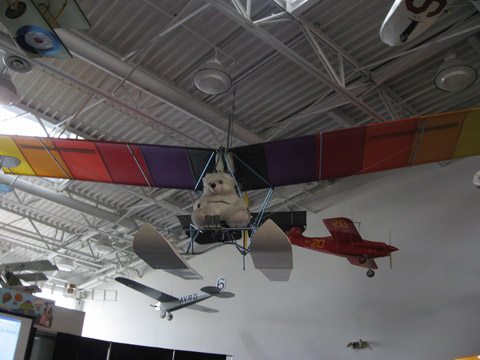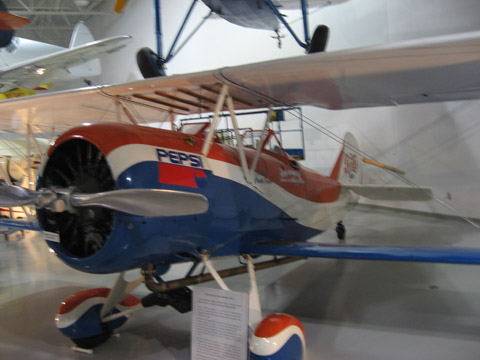 I recently had a chance to visit the Hiller Aviation Museum. It's an interesting place. The museum is housed within a former industrial building.
I recently had a chance to visit the Hiller Aviation Museum. It's an interesting place. The museum is housed within a former industrial building.In the main entrance hall, the visitor can view a sizable restoration shop with its menagerie of old equipment and tools. The shop is bigger than some machine shops. There are also many scaled airplane models dangling from the ceiling. Let's not forget the rather sizable souvenir shop. Yes, I bought the t-shirt. :)
The main viewing room is the entire right side of the building. It houses many full scale and scaled air machines, with some original airplanes mixed with replicas. Where there's space to fill, you'll find an airplane or parts thereof.
 One of the more interesting facts promoted at this museum is that there where successful attempts at powered flight long before the Wright Brothers. The Herman Avitor Jr. (or just Avitor) was powered by a 1-hp steam engine that drove twin propellers. It was was the first successfully flown heavier-than-air aircraft to employ a three-axis control system. It was built in San Francisco, CA. In 1869 it took flight near the modern day SF Int'l Airport. Sometime after its first flight, the contraption was destroyed when it caught fire.
One of the more interesting facts promoted at this museum is that there where successful attempts at powered flight long before the Wright Brothers. The Herman Avitor Jr. (or just Avitor) was powered by a 1-hp steam engine that drove twin propellers. It was was the first successfully flown heavier-than-air aircraft to employ a three-axis control system. It was built in San Francisco, CA. In 1869 it took flight near the modern day SF Int'l Airport. Sometime after its first flight, the contraption was destroyed when it caught fire. Another interesting exhibit was the Pepsi Skywriter, used by Pepsi to promote their product for a few decades starting in the late 1920's. I'm not sure if this is a replica, but it is interesting to see the old Pepsi logo and figure how long ago companies where using inventive new marketing techniques to promote their products.
Another interesting exhibit was the Pepsi Skywriter, used by Pepsi to promote their product for a few decades starting in the late 1920's. I'm not sure if this is a replica, but it is interesting to see the old Pepsi logo and figure how long ago companies where using inventive new marketing techniques to promote their products.



